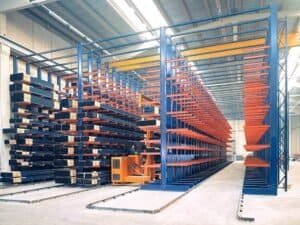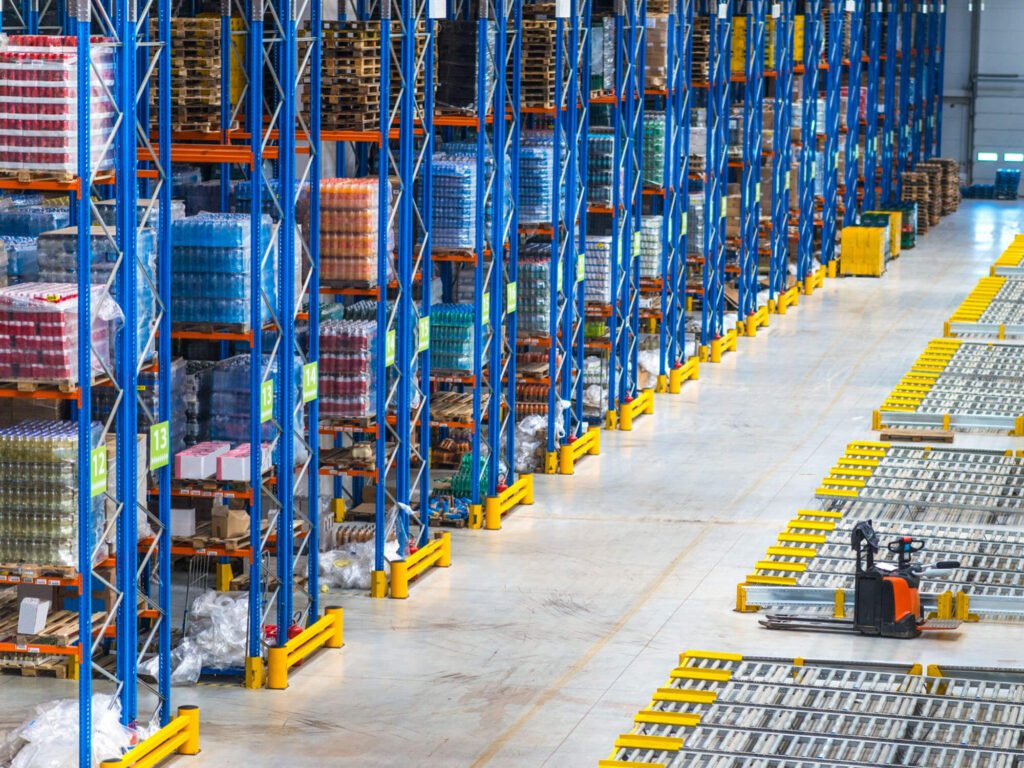An organized warehouse is crucial for the operational efficiency and productivity of a business and its employees. Opting for different storage methods makes it easier for everyone to have an organized warehouse and pallet storage is always the best idea.
If you are looking forward to learning more about the tips and practices you should implement with pallet storage warehouses, this guide below could be of great help. So let’s explore it.
Understanding Pallet Storage Warehouses
Getting a thorough understanding of the pallet storage warehouse is very important to proceed with this storage system, the section below provides a detailed understanding of the pallet storage warehouse.
What Is a Pallet Storage Warehouse?
A pallet storage warehouse offers a specialized facility that is designed for storing goods on pallets. These pallets are flat structures that support goods when they are lifted using forklifts or pallet jacks.
A pallet storage warehouse is a type of storage facility where the goods are organized in pallets and can be moved away with the help of equipment making the process of storage and retrieval efficient. It helps maximize the storage density and also reduces the cost of handling by improving the management of inventory. Pallet storage warehouses help to organize goods in large volumes.
There are different types of industries that benefit from the pallet storage warehouse and some of these are discussed below:
- Retail Industry: Retailers need to manage a large volume of inventory with efficiency and they make use of pallet storage for enhancing their operations.
- Manufacturing Industry: The manufacturers comprise raw materials and finished products which are meant to be stored on pallets and which help in optimizing the space and ensuring easy movement within the facility.
- Pharmaceutical Industry: The pharmaceutical industry needs to manage medical supplies and drugs and ensure that the products are stored in a way that complies with health regulations, hence they use pallet storage.
- Food and Beverage Industry: The food and beverage industry makes the use of segregating the perishable and non-perishable items which can easily be segregated using a pallet racking system.
The Role of Pallet Racking Systems
Pallet racking systems are the backbone of pallet storage warehouses because they offer a well structured means of storing and organizing pallets. The pallet racking system ensures that the vertical space is properly utilized and pallets are easily accessible.
They help to ensure efficiency in the warehouse and maximize the capacity. The pallet racking system comprises horizontal beams, upright frames, and accessories like load stops and safety guards to ensure efficient holding of the goods.
Common Racking Types
There are different types of racking systems that fall under the category of pallet racks and some of these include the following:
Selective Racking System
The selective racking system is one of the most common types of racking system which allows accessing each pallet directly. It is very easy to install and offers excellent accessibility. It even has low storage density when compared to other types of racking systems.
Drive-In Racking
The drive-in racking system allows forklifts to directly drive on the racks and retrieve the pallets. It uses the first-in-last-out method of inventory management. The drive-in racking system offers to reduce aisle space requirements and also offers high storage density. However, it needs careful management of the flow of inventory and the access is limited to individual pallets only.
Push-Back Racking
In a push-back pallet racking system, the pallets are loaded on nested carts and are pushed back into the racking system. When new pallets are added, the older pallets are pushed forward so that the retrieval becomes easier. It works to offer high storage density but needs timely maintenance and also is only limited to the LIFO inventory management system.
Pallet Flow Racking
The pallet flow racking system uses gravity for moving pallets, it loads from the end and picks from the end consisting of roller wheels. It is a suitable method of storage for high-volume products and those that move fast with the FIFO inventory management system. However, they are expensive and the rollers may have some maintenance issues.
Best Practices for Pallet Storage Warehouse Management
Some of the best practices to follow for pallet storage warehouse management which offers better organization for a warehouse comprise the following:
Space Optimization
Space optimization is crucial when it comes to warehouse organization and this comprises maximizing the vertical as well as horizontal space. In order to maximize the vertical space you can use racking systems that are vertical and tall, make the most of the height in the warehouse, and implement high-density racking systems. In this case, pallet flow and drive-in racking systems are highly suitable.
The horizontal space can be maximized by optimizing the width of the aisle and you can create a balance between accessibility and storage density. The use of adjustable racking systems may prove to be helpful as they can accommodate different sizes of pallets meeting varied storage needs.
The width of the aisle should be planned very carefully keeping in mind the efficient movement of forklifts because narrow aisles can reduce maneuverability. Moreover, the design of the warehouse layout should be supportive enough to streamline the flow of goods from receiving the goods to storing them.
When the layout of the warehouse is well planned the travel time for workers and equipment is reduced which increases productivity and decreases the chances of accidents.
Choosing the Right Pallet Racking System
Selecting the right pallet racking system plays a very important role in adding efficiency to your warehouse and optimizing the storage space. Some of the important factors that should be considered when choosing the pallet racking system are as follows:
- When selecting the pallet racking system to assess the load capacity of the goods, the racking system should be capable of handling the maximum load per pallet so that the overloading of racks can be avoided, overloading causes risks of safety and damage.
- Warehouse layout is very important to consider when choosing the pallet racking system, you must consider the height of the ceiling, and floor space so that you can determine the right racking system, customized racking systems are suitable for multiple warehouse configurations.
- Every product has a different storage requirement, for instance, the products that have high turnover may need pallet flow racks, whereas the heavy products need drive-in racks so the selection of pallet racking system depends on the nature of the products.
There are various advantages of choosing customizable racking solutions and most industries nowadays go for these, some of these advantages are as follows:
- The racking solutions which are customizable tend to be tailored for specific needs of storage and can have adjustments based on the changing inventory requirements.
- Custom pallet racks can help maximize the available space and also can accommodate the unique pallet sizes and odd storage requirements.
- As time passes the warehouse may grow and customizable racking systems can be expanded based on the nature of your business scalability.
Safety Measures
Some of the essential safety measures must be taken in order to ensure that the employees are protected from accidents and hazards in the pallet storage warehouse and these safety protocols comprise of the following:
- It is important to adhere to the specified load limits for the racking systems so that overloading can be prevented as it leads to collapse.
- Timely inspection of racking systems is important to address any wear and tear and also a formal process of inspection must be implemented.
- Employees should be given training to ensure safe operating procedures when it comes to handling equipment while stacking and retrieving pallets.
Tips for Effective Pallet Storage
Some of the tips for effective pallet storage are very important to be followed and some of these tips are as follows:
Inventory Management
Stock rotation is very important so that the quality of the inventory can be maintained and it helps to minimize the losses. When it comes to perishable goods the items that have expiration dates are managed through FIFO.
Similarly, when it comes to products which do not have expiration dates then LIFO may prove to be a suitable method of inventory management. Also, keeping tracking systems for inventory in place proves to be a suitable approach and labeling the racks with the type of products, their expiration date, etc helps to organize the storage.
Regular Maintenance and Inspections
Maintenance of racking systems is also crucial to ensure safety and efficiency in the operations of a warehouse. A routine should be established for keeping a check on the racking systems and ensuring that any signs of damage are timely identified and rectified. It helps to enhance the lifespan of racking systems.
Adapting to Business Growth
As time passes the storage needs also evolve with the growth of business and hence the warehouse space and racking system must be planned keeping in mind the scalability of these racking systems so that they can adjust future storage needs of a business.
Conclusion
Lracking offers a custom pallet racking system that enhances warehouse storage processes. You can optimize the space for your products in an efficient way. The pallet storage racking systems offered by Lracking are equipped with durability, affordability, scalability, and innovation which helps with the appropriate storage of goods irrespective of your business nature. So, get in touch with us today and we will provide you with a seamless pallet racking system for your warehouse.




